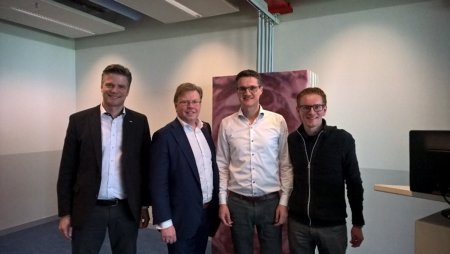An experiment involving ~70 students from the elective master course Strategic Technology Management and Innovation reveals new insights on the value of scenario analysis for strategy formulation and the design of high-quality business roadmaps[i]. In close collaboration with the ROSEN Group, dr. Erwin Hofman and PhD-student Remco Siebelink conducted an experiment to test the impact of scenario analysis on the generation of strategic (real) options.
Scientific scrutiny on scenario analysis at present relies heavily on anecdotal evidence, and limited empirical studies. As a result, several core premises of scenario analysis have not been tested to date. In order to present convincing evidence on the effect of scenario analysis, we conducted the aforementioned experiment. Among their many benefits, experiments excel in identifying causality, and in this study the focal question was: does scenario analysis result in higher value and higher novelty strategic options than conventional strategy tools do? At first sight our answer is ‘No’; at second sight we must say: ‘absolutely’! How can that be?! The answer is hidden in the tails of the probability distribution of the scores… On average we find that SWOT-based options have a higher value and slightly higher novelty. However, the root of the matter is that scores of scenario-based options have larger variance! This means that scenario-based options outnumber SWOT-based options in terms of high-value and high-novelty. Such options are exactly the ones that a technology leader wants to put on its business roadmap in order to stay ahead of competition and continuously renew its business.

From left to right: dr. Ingo Nee (ROSEN Group), Paul de Ruyter MSc. (external consultant), dr. Erwin Hofman and Remco Siebelink MSc. PDEng. Prof. dr. ir. Joop Halman (not on the picture) also contributed to this project.
Besides further research on scenario analysis, next steps in this research project will focus on designing a process for dynamic business roadmapping by integrating scenario analysis and developing an effective way to visualize and so communicate the business roadmap.
For more information about the experiment, or if your organisation is interested in joining our upcoming roundtable on scenario based business roadmapping, you can contact Erwin Hofman through e.hofman@utwente.nl or +31 53 489 4494.
[i] The sample was split in two groups of ~35 students that each developed strategic options – half of the sample relied on scenario analysis, the other half of the sample relied on conventional SWOT analysis (internal strengths and weaknesses, external opportunities and threats). Whereas SWOT analysis is more about trend analysis, scenario analysis is about imagination and creativity by constructing plausible stories about how the future may unfold. After the treatment, students developed strategic options based on their analysis.





